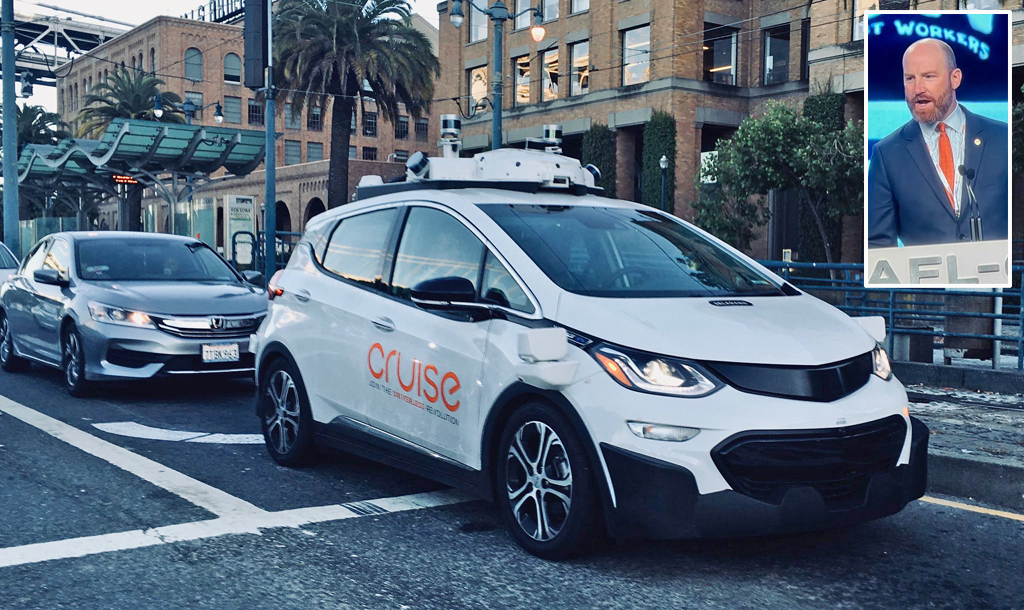In the last 50 years, nearly every state agency that used to call itself the "highway department" has changed its name to the "department of transportation" to reflect a purported change in mission. In theory, DOTs are not only concerned with moving cars on highways -- they manage entire transportation systems, which include transit, biking, and walking. But in practice, many state DOTs still operate strictly as highway departments.
We're going to pick on the Ohio DOT today, because I happen to live in Cleveland, but also because it's a great example of a "transportation department" in name only, still focused solely on speeding motor vehicle traffic on big roads.
A recent article in the Plain Dealer details how ODOT squashed the city of Cleveland's plans to tear down a lightly-traveled lakefront highway, citing concerns about congestion.
More than a decade ago, Cleveland's mayor at the time, Jane Campbell, set out to turn the West Shoreway -- a state highway that divided the city's west side neighborhoods from a large lakefront park called Edgewater -- into a surface street that people could cross on foot. The idea was to give residents better access to the lake by reconnecting the local street grid to the waterfront. In addition to the pedestrian and public space improvements, the project would have encouraged development and grown the tax base in a very poor city.
But ODOT nixed a key component of the plan -- signalized intersections -- saying they would "fail" or have a low "level of service," reports the Plain Dealer's Steven Litt. In other words, allowing Clevelanders access to the lakefront would impose a few minutes of delay on suburban car commuters. A modified version of the West Shoreway project was implemented instead, with ODOT and Cleveland spending $100 million to add landscaping and build a few tunnels underneath the roadway to improve pedestrian access to the lake.
As implemented, the project is a far cry from what Campbell envisioned, Litt writes:
A dozen years and $100 million later, it's hard to see the Ohio Department of Transportation's re-do of the Shoreway, scheduled for completion next year, as more than a faint echo of the project's original concept.
Adding the intersections would have transformed the Shoreway from a regional thoroughfare into a local boulevard.
And it would have made Edgewater Park, one of the city's greatest amenities, far more accessible.
Detroit Shoreway residents would have been able to stroll down any of the newly connected streets to the lakefront rather than use pedestrian tunnels that burrow under the rail line and the Shoreway.
With roughly two-thirds of the work on the Shoreway now done, the reality is that Detroit Shoreway still remains largely walled off from Edgewater Park by a railroad line and by what still amounts to a three-mile, limited access freeway.
District 12 Deputy Director Myron Pakush blames the whole thing on federal red tape. "You cannot expend federal dollars for something you would create traffic jams on," he told Litt.
This is a great example of what's called a "technical brushoff," and it's not even true.
Last year, Barbara McCann, a policy director at U.S. DOT, told Streetsblog that "there is no federal mandate for Level of Service." Her comments were aimed at encouraging highway planners like Pakush not to let this clumsy measure of car congestion obstruct projects that improve street networks for walking, biking, and transit. ODOT District 12 has entirely missed the memo.
By acting as a highway department, not a transportation department, ODOT reinforced the pattern of sprawl and disinvestment that has made Cleveland one of the poorest and fastest shrinking cities in the country. That was a much more tolerable outcome for the agency than a few minutes of delay for motorists.
More recommended reading today: Bikemore reports that Baltimore DOT's long-awaited recommendations for Boston Street, a major thoroughfare, are terrible for walking, biking, and transit. And American Dirt relays an example of an all-too-common problem: a walkable small town where highway-like road design undercuts the local tourism economy.






